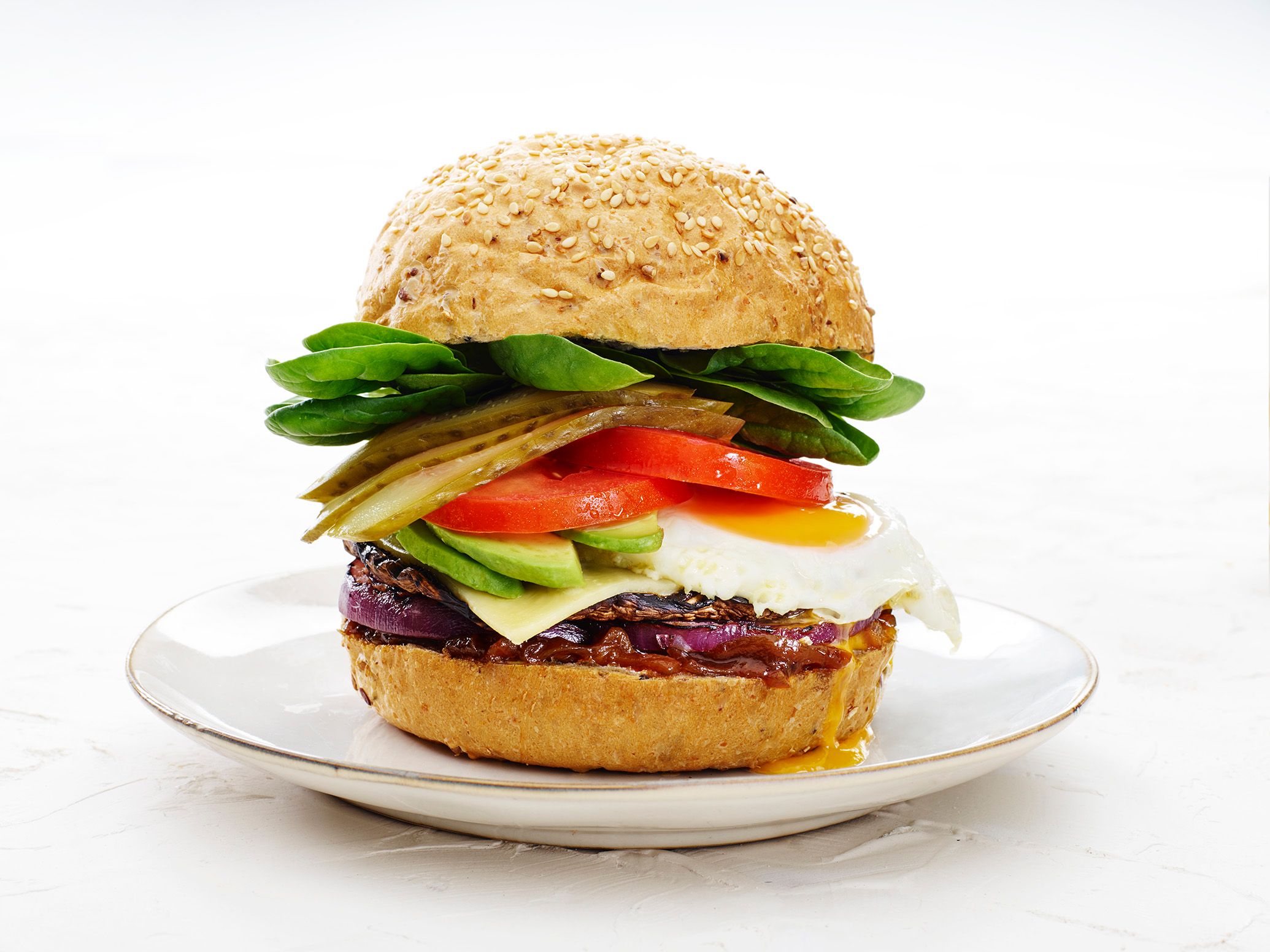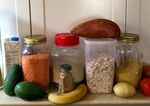What you need to know about processed food
by Gael Myers, Accredited Practising Dietitian
- May 3, 2024
- Leave a comment

Processed food has gotten a bad wrap of late, but is that fair?
Well… yes and no.
Before sorting out the fact from the fiction, we first need to understand a bit more about what it means for a food to be ‘processed’.
What is food processing?
Food processing includes all the ways in which foods and drinks are modified from basic raw ingredients into what goes on the table. Home cooking techniques like chopping, boiling and freezing count as food processing, and so do the kind of treatments that can only be done in a lab or factory like heating to very high temperatures, extrusion and hydrogenation.
To understand the link between food processing and health, we need to distinguish between these different types of processing. And the NOVA classification system is a handy way to do this! NOVA splits up foods and drinks into four groups based on the level of processing they’ve undergone:
Group 1 – unprocessed and minimally processed foods
Foods that are either eaten in their original form or are altered by basic processes like removing inedible parts, chopping, crushing, grinding, drying, cooking, freezing or heating, without the addition of other ingredients. Examples include fresh or frozen vegies, flour, nuts, pasteurised milk, fresh meat and dried lentils.



Group 2 – processed culinary ingredients
These are processed ingredients derived from minimally processed foods that are added in small amounts to group 1 foods to add flavour or to help the cooking process. These ingredients are not generally eaten by themselves. Examples include salt, oil, vinegar, table sugar, honey and butter.

Group 3 – processed foods
Foods produced by processing techniques that could be done in a home kitchen like canning, bottling, pickling and fermenting. These foods are generally made from more than one ingredient, which may include added sugar, salt or fat. Examples include canned and bottled vegetables, freshly made bread and bakery products, plain yoghurt, salted nuts, canned fish and cheese.

Group 4 – ultra-processed foods
Ultra-processed foods are made using industrial processing techniques and contain ingredients to enhance taste, texture, appearance and shelf-life that are not generally used in home cooking like “flavours”, intense sweeteners, colours, thickeners, emulsifiers, ultra-processed forms of sugar (e.g. high-fructose corn syrup, fruit juice concentrate, dextrose), isolated proteins (e.g. soy protein isolate, whey protein) and non-traditional preservatives. These foods tend to be highly packaged, heavily marketed and use low-cost ingredients to maximise profits. Examples include vegie chips, packaged biscuits, mass produced bread, soft drinks, margarine, instant soup, lollies, crisps and packaged sausage rolls and party pies.



So… how do different types of food processing relate to health?
The processing techniques that land a food or ingredient into groups 1-3 of the NOVA system aren’t generally a concern when it comes to our health. Processing is important and allows us to create food that is:
- Safe – for example, pasteurising is the process of heating milk to a temperature that kills harmful bacteria
- Nutritious – some nutrients (like vitamin A) are better absorbed by our bodies from cooked food
- Tasty – freshly made bread is a lot more appealing than a bag of wheat!
- In good supply – freezing and canning perishable foods like vegetables means they keep for much longer periods, ensuring we have a good supply of them all year round
Group 3 foods contain ingredients like sugar and salt that can be harmful to our health if eaten in large amounts. Therefore it’s important to consider the amount of these additions that are in processed foods before making a judgement about how healthy they are. Our label reading card is a great tool for doing this – you can find out more about this on our interactive tutorial page.
Ultra-processed foods
Ultra-processed foods are chemistry lab creations that have been modified in ways that make them profitable for the industry creating them, but detrimental to human health. While it’s okay to have them in small amounts, ultra-processed foods now make up a staggering proportion of the Australian diet, with approximately 42 per cent of our energy (kilojoules or calories) coming from these foods. This is lower than countries like the USA (58 per cent) and the UK (57 per cent), but much higher than countries like Italy (10 per cent).

How ultra-processed foods push us to eat more than we need
Ultra-processed foods are hyper-palatable (a fancy way of saying ‘easy to eat’) and therefore encourage over-eating, which over time can lead to weight gain. Through extensive research and testing, the food industry has figured out exactly how to combine ingredients like sugar, fat and salt in a way that blisses out our senses. This can override our natural ability to match how much we eat to how much our body needs.
Ultra-processed foods also tend to be:
- Heavily marketed – advertising for these foods is everywhere, which makes us crave them often
- In a ready to eat form – this means they’re the first thing we reach for when we are busy or feel tired after a long day of work
- Low in fibre and protein – fibre and protein help us feel fuller for longer
- Energy dense – meaning they pack a lot of kilojoules into a small volume
A research trial looking at the impact of ultra-processed foods on energy intake highlights how these foods encourage overconsumption. Participants in the study were asked to follow either a diet containing only ultra-processed foods or one with only minimally processed and unprocessed foods for two weeks. All meals and snacks were provided and participants were invited to eat as much or as little as they liked. After two weeks each participant switched to the other diet for a further two-week period.
When following the ultra-processed diet, participants ate about 2000 more kilojoules (478 Calories) each day compared to when they were following the less processed diet. Body weight increased by around a kilo during the ultra-processed diet, and fell by the same amount during the minimally processed diet. The study also found that participants ate more quickly when eating from the ultra-processed menu.
Ultra-processed foods and health
There is a growing body of research linking high intake of ultra-processed foods to a range of health outcomes, including:
- Type 2 diabetes
- Poor sleep (duration and quality)
- Anxiety and depression
- Obesity
- Heart disease related mortality
As the amount of ultra-processed foods in our diets increases, it also reduces the space available for more nutritious and less processed foods that are linked to health benefits. If we’re eating “puffed chocolate rice”, we’re not eating porridge which is linked to lowered blood cholesterol and reduced risk of bowel cancer (as are all wholegrain foods).
Healthy swaps to eat less ultra-processed foods
For many people, making a few small healthy changes at a time is easier to stick to in the long run than completely overhauling what we eat. Our food habits are built over a lifetime, and don’t often change overnight. If you’d like to try to reduce the amount of ultra-processed foods in your day-to-day, give some of these swaps a go!
Ultra-processed food
Healthy swap
Most breakfast cereals
- Porridge made with rolled oats, milk and fruit
- Bircher muesli
- Homemade smoothie


Packaged cakes, muffins and biscuits
- Homemade baked goods
- Plain yoghurt and fruit


Packaged muesli bars
- Unsalted nuts
- Fruit
- LiveLighter’s 5-ingredient breakfast bars


Sausage rolls and meat pies


Fast food


Sugary drinks
- Fizzy water with cut up fruit and/or herbs
- Low sugar soft drink alternatives
- Cup of tea or coffee


Potato chips, corn chips and vegie chips
-
Grainy crackers and hummus


Lollies
- Dried fruit
- Fresh fruit
- Homemade baked goods


While ultra-processed foods are fine and safe to include as occasional convenience foods, eating too many of them can harm our health. Filling our plates with whole foods and nutritious foods made using basic processing techniques will nourish our bodies and keep us feeling good.







